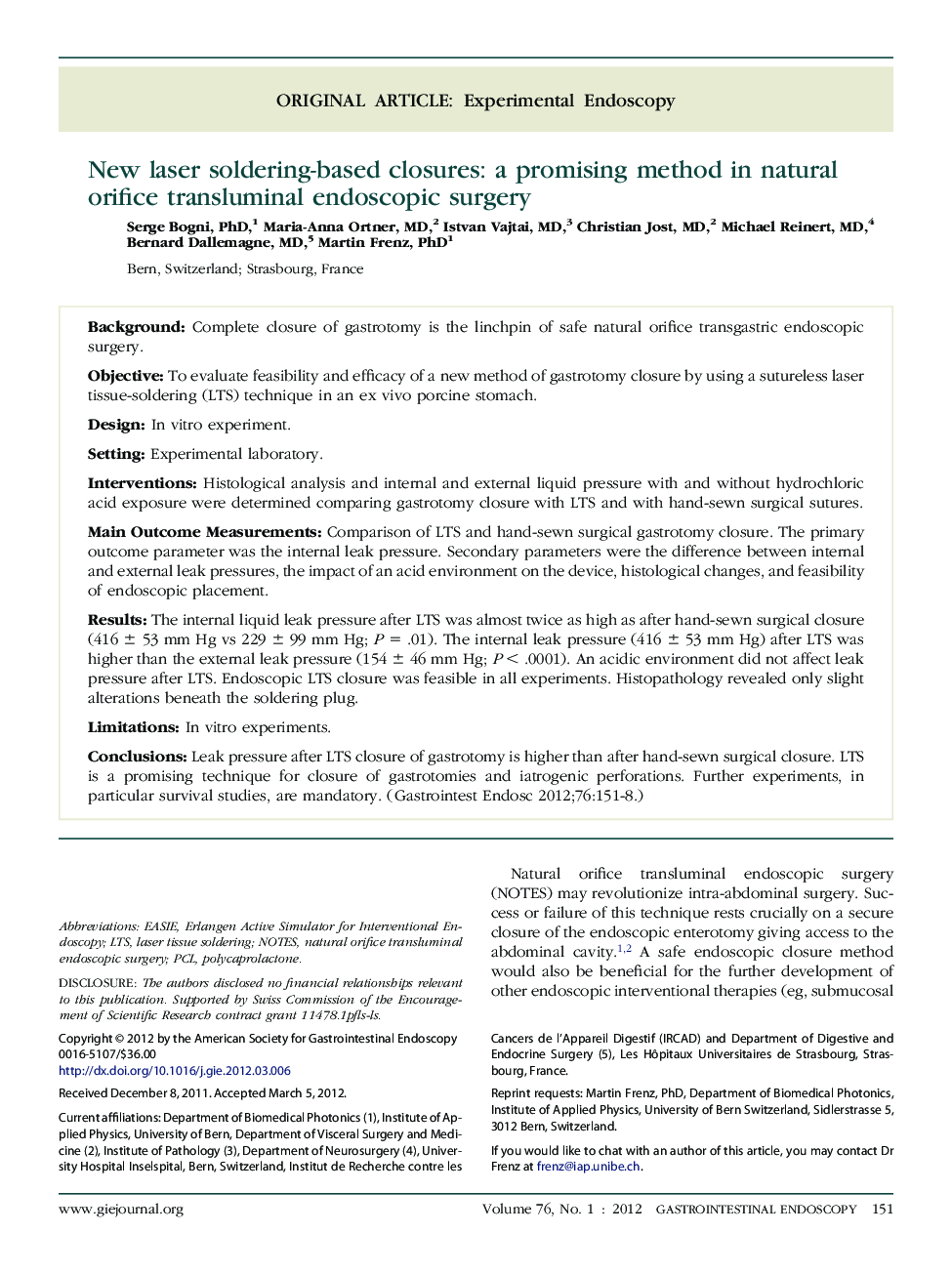| Article ID | Journal | Published Year | Pages | File Type |
|---|---|---|---|---|
| 3304165 | Gastrointestinal Endoscopy | 2012 | 8 Pages |
BackgroundComplete closure of gastrotomy is the linchpin of safe natural orifice transgastric endoscopic surgery.ObjectiveTo evaluate feasibility and efficacy of a new method of gastrotomy closure by using a sutureless laser tissue-soldering (LTS) technique in an ex vivo porcine stomach.DesignIn vitro experiment.SettingExperimental laboratory.InterventionsHistological analysis and internal and external liquid pressure with and without hydrochloric acid exposure were determined comparing gastrotomy closure with LTS and with hand-sewn surgical sutures.Main Outcome MeasurementsComparison of LTS and hand-sewn surgical gastrotomy closure. The primary outcome parameter was the internal leak pressure. Secondary parameters were the difference between internal and external leak pressures, the impact of an acid environment on the device, histological changes, and feasibility of endoscopic placement.ResultsThe internal liquid leak pressure after LTS was almost twice as high as after hand-sewn surgical closure (416 ± 53 mm Hg vs 229 ± 99 mm Hg; P = .01). The internal leak pressure (416 ± 53 mm Hg) after LTS was higher than the external leak pressure (154 ± 46 mm Hg; P < .0001). An acidic environment did not affect leak pressure after LTS. Endoscopic LTS closure was feasible in all experiments. Histopathology revealed only slight alterations beneath the soldering plug.LimitationsIn vitro experiments.ConclusionsLeak pressure after LTS closure of gastrotomy is higher than after hand-sewn surgical closure. LTS is a promising technique for closure of gastrotomies and iatrogenic perforations. Further experiments, in particular survival studies, are mandatory.
